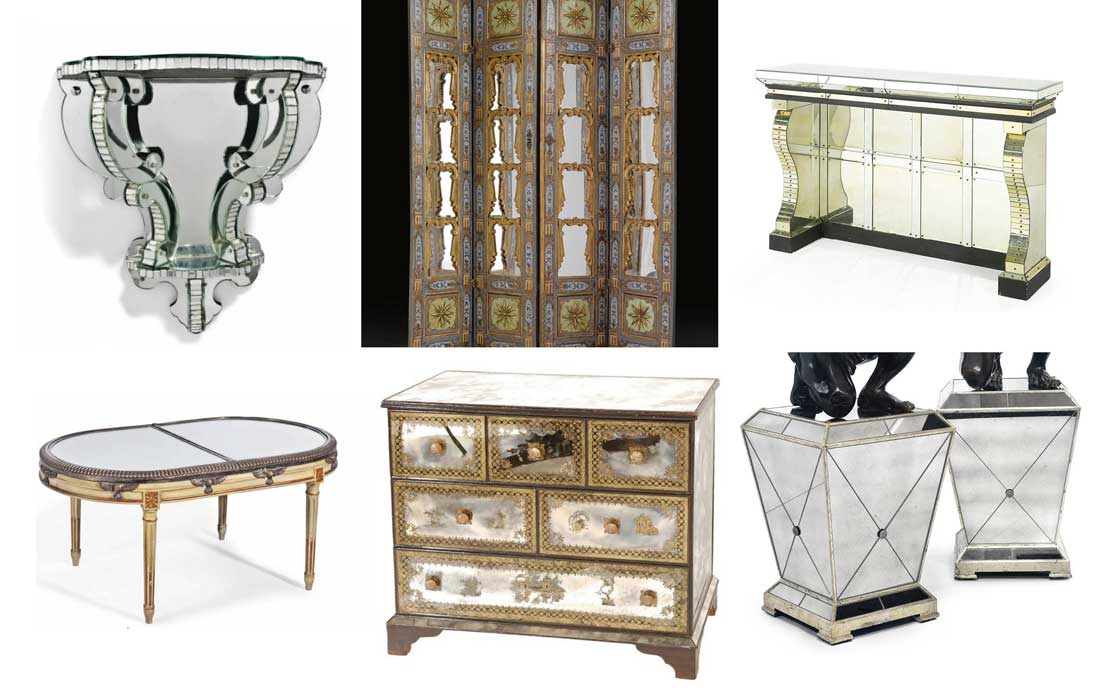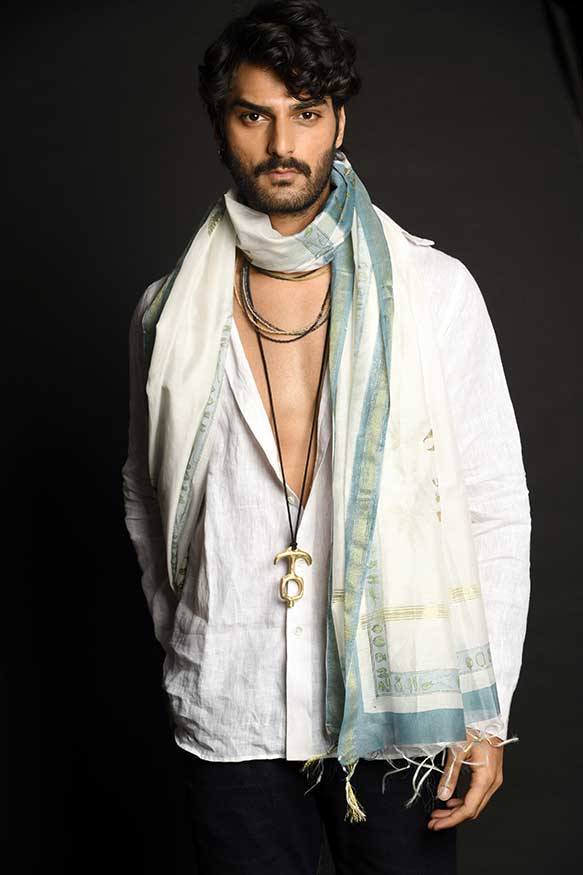"Mirrored Furniture was a Charming Diversion, Which Spoke to a Court's Interest in Optics as Part of the 17th and 18th Centuries' Games of Light."
Mirror is central to every aspect of human history—art, archaeology, medicine, psychology, philosophy, technology, optics—and of course, style. Mirror's contributions to visual culture are wrapped in notions of beauty, love and eros. Luxury and cultural history matter, too. The aristocratic society of Louis XIV had a passion for mirrors, which lit up dark rooms and lightened thick walls. The desirable effects of mirrors on walls exploded when applied to mirrors on furniture.
The Greatest Commercial Secret of the Day
Mirrored furniture speaks to a time when the technology of mirror making was a state secret and exclusivity created ravenous demand. In status obsessed European courts, mirrors were an almost perfect Veblen effect, where demand went up when prices went up. Indeed, owning a mirror was among the first examples of conspicuous consumption where mirrors were, literally, worth their weight in gold.
What Was it Like?
Nightstands reflected candlelight. Dressers emerged, grew and receded into shadows on a breeze. Desks caught shards of morning light, magnifying the prismatic clarity of sunlight. Mirrored furniture was a charming diversion, which spoke to court’s interest in optics as part of the 17th and 18th centuries' games of light.
Mirrors brought not only utility and beauty, but functioned as an artistic medium for expressing thought and feeling. At the highest level, mirrors were yet another tool for seduction, surveillance and image management. Mirrors gave life to many surfaces, eventually replacing paintings and tapestries.
THE FASHION FOR MIRRORED FURNITURE
At the Sun King’s court, fine furniture was often made of solid silver. In 1689 Louis XIV decreed that all private silver be confiscated (including his) and melted to pay for his military campaigns. These silver furnishings, which symbolized the glory and magnificence of the Sun King and France, were surrendered by patriots at court, along with fine jewelry and other things that could pay for war. Courtiers weren’t going to go without or sit on crates for long. Where to write letters now?
By 1689 mirrors were technically advanced enough to create the Hall of Mirrors, but still rare and expensive, even among royals. As such, they were a suitable substitute for solid silver furnishings. Mirrored furniture and other decorations became a new way fashionable people could differentiate themselves and how they lived from those of lower classes or more pedestrian tastes. These mirrored desks, vanities, nightstands, dressers and chests were sensationally desirable because they brought additional lighting and a feeling of expansion to dark spaces. In an early example of freak flag flying, Louis XIV, equipped the bed he shared with his mistress Madame de Montespan with a mirrored headboard.
OBJECTS OF CLASS, CULTURE, PERSONALITY, LEISURE AND TASTE
The impulse to be attractive and fashionable still drives design history. In the late 1600s, society was much more stratified, which means only royals, top minsters and a few merchants could afford or have access to fine mirrors. Few furniture objects reveal as much about class, culture, personality, taste, social customs and leisure pursuits than mirrors…especially in their domestic expression as mirrored furniture. At the time, mirrored furniture was associated with technology, splendor and all things charming. Every fashionable person wanted some.
The most popular style was the sumptuous dressing table located in private chambers that welcomed only one’s closest friends. At the end of the eighteenth century women mirrored their salons, sleeping alcoves, ceilings, stairwells, wardrobes and other furniture.
It Was Always About Light
“Mirrors thus invaded household décor and transformed furniture throughout the eighteenth century. A certain amount of time was needed to acclimate to them, however, for their visual effects turned the relationship between empty and full surfaces on its head and defied equilibrium. But, soon people could not do without the light brought by looking glasses they gave life to surfaces, replacing paintings and tapestries to the point of alarming one contemporary art critic, La Font de Saint-Yenne who regretted what he called the “disastrous blow” that mirrors delivered to historical painting. At the end of the eighteenth century, mirrors brought an element of a fairy-tale dream to life as they invaded all spaces of social interaction, where they replaced tapestries. “ Sabine Melchior-Bonnet--The Mirror: A History
----------
QUOTES: SABINE MELCHIOR-BONNET, THE MIRROR: A HISTORY, (ROUTLEDGE, 2002).PHOTOS: © BUNGALOW 5, LLC
PHOTOS: © BONHAMS.COM
PHOTOS: © CHRISTIES.COM






